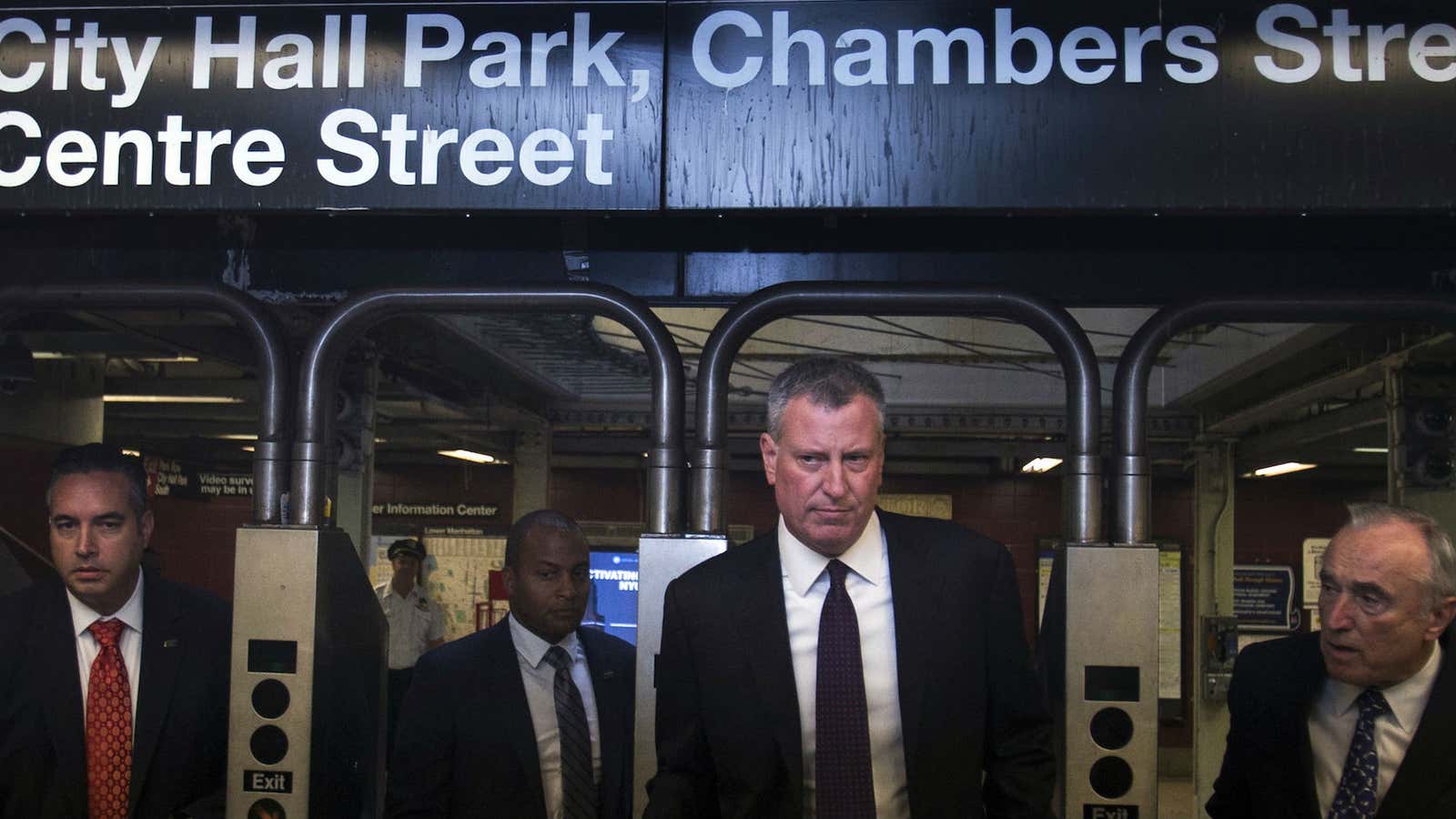Iraqi prime minister Haider al-Abadi’s told reporters at the United Nations yesterday that he had ”credible intelligence” that the Islamic State extremist group is planning an attack on public transportation networks systems in Paris and somewhere in the US.
US and French security officials rushed to refute Abadi’s claims, as did senior Iraqi sources who were interviewed by Reuters. Officials in New York, home to the country’s largest public transit system, were especially anxious to assure commuters. “There is no immediate credible threat to our subway system,” said New York City mayor Bill de Blasio. “I say that with confidence. People should go about their business as they normally would.” City officials in Chicago and Washington D.C. also said they knew of no imminent threats.
But metro networks around the world have been frequent targets of terrorist attacks in the past, including deadly incidents in Madrid, London, and Mumbai that killed hundreds of people over the last decade, and unsuccessful plots in Melbourne, Sydney, Cologne, Barcelona, and Milan.
According to a 2012 study by MIT’s Sloan School of Management, criminal and terrorist acts make up about 8% of the death risk of air travel, but account for 88% of the mortality risk for those traveling subway or commuter train. Between 2002 and 2011, there were 804 deaths among subway and rail commuters, compared to 203 aviation deaths, according to the study.
In the US, at least seven planned terrorist attacks have been directed at subway or commuter trains over the past few decades, according to Brian Jenkins, director of the Mineta Transportation Institute’s National Transportation Safety and Security Center in San Jose. New York City’s transit system, which carries over 5 million passengers on a typical weekday and is one of the oldest and largest in the world, has been the target in most of these plots:
Flatbush, 1997
New York police were tipped off by an acquaintance of two men who had planned to bomb a subway station in Brooklyn frequented by Orthodox Jews. The two men, Gazi Ibrahim Abu Mezer and Lafi Khalila, carried Jordanian passports and identified themselves as Palestinian. They were arrested before the plot could go forward.
Al-Qaeda cyanide plot, 2003
According to US government officials, al-Qaeda operatives had planned to release cyanide gas at various points within New York’s subway system before Ayman al-Zawahiri, the group’s current leader, called off the plot. The attack may have been modeled after a 1995 attack in Tokyo where the Japanese cult Aum Shinrikyo released the nerve gas, sarin, killing 13 and injuring 50.
Herald Square, 2004
Two men were arrested for planning to put explosives in a subway station in Manhattan. Lawyers of both men, Shahawar Matin Siraj, a Pakistani immigrant, and James Elshafay, a schizophrenic 19-year-old from Staten Island, claimed they were manipulated into the plot by a police informant. The men had no no timetable for the attack and had not obtained explosives, but had drawn a rough diagram of where to place explosives in the Herald Square station in midtown Manhattan. They were not linked to any known terrorist group.
Hudson River, 2006
A group of eight men planned to blow up tunnels between New Jersey and New York by detonating bombs on the Port Authority Trans-Hudson (PATH) train as it passed underneath the Hudson River, according to US and Lebanese officials. US counter-terrorism officials said there was no evidence that the men had tried to implement the attack, supposedly intended to flood lower Manhattan, and called it little more than “jihadi bravado.” The plot was discovered after one of the planners, Assem Hammoud, was arrested by Lebanese authorities.
Long Island Railroad, 2008
New York native Bryant Neal Vinas, an Army veteran who converted to Islam supplied al-Qaeda with details about the operation of the Long Island Rail Road. After he was arrested in Pakistan, Vinas warned US officials of an imminent plan to blow up a LIRR train inside Penn Station, and authorities to put the city on terror alert in November, 2008.
Suicide bomb plot, 2010
An Afghan-American man, Najibullah Zazi, and four other al Qaeda supporters in the US were charged with planning suicide bombings on the New York subway system as well as companion attacks in London. Last year, US officials defending the National Security Agency’s surveillance program PRISM said that monitoring Zazi had helped thwart the attack, but critics say that old-fashioned police work uncovered the plot.
